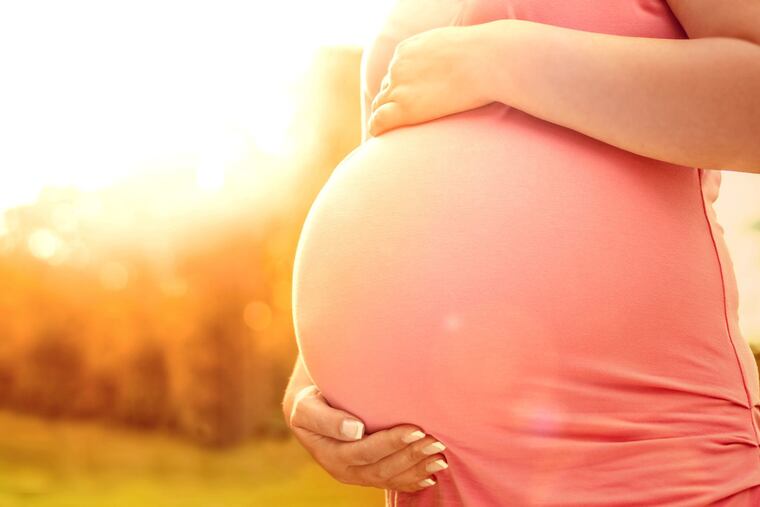Pregnant women should get out of this heat, federal studies warn
High heat exposure now can lead to birth problems later.

Chances are you’ve heard that extreme hot temperatures like those the Philadelphia region is experiencing can be perilous to senior citizens. Heat waves can also be brutal for pets and dangerous for young children.
Expectant mothers, you’re advised to stay out of the heat, too.
Extreme temperatures during various stages of pregnancy can increase the risk for preterm birth as well as low birth weight in infants, according to research by the National Institutes of Health (NIH).
“Our findings indicate that it may well be prudent to minimize exposure of pregnant women to extremes in temperature,” said researcher Pauline Mendola, an epidemiologist at the NIH’s Eunice Kennedy Shriver National Institute of Child Health and Human Development.
The risks vary at different times of a pregnancy, according to NIH studies. The researchers looked at results for hot temperatures in the 90th weather percentile. Friday’s temperature high in Philadelphia hit the 98th percentile, and this weekend is expected to be even steamier.
A pregnancy is generally considered full term between 39 to 40 weeks. Delivery before 37 weeks of pregnancy increases the risk of infant death or disability.
NIH researchers found that women whose first seven weeks of pregnancy were during an extreme heatwave had an 11 percent increase in risk of birth before 34 weeks and a 4 percent increase risk of delivery between 37 and 38 weeks.
Exposure to extreme heat during weeks 15 to 21 of a pregnancy increased the risk of delivery at 34 to 36 weeks by 18 percent. Excessive hot temperature exposure during weeks eight to 14 increased the risk of birth at weeks 37 to 39 by 4 percent, the researchers found.
The researchers found that women who experienced extreme cold during the first seven weeks of their pregnancies were also more likely to have premature deliveries, including a 20 percent higher risk of delivering before 34 weeks of pregnancy.
However, they found more consistent associations between early delivery and extreme heat than extreme cold weather. Their research did not establish why that was, but the researchers theorized that people are more likely and possibly more able to find shelter from the cold.
During extreme heatwaves, people may be more likely to endure the high temperatures, especially when they can’t afford air conditioning or lack access to it.
Exposure to extreme heat during a pregnancy can also increase the chance of a low birth weight baby, even in infants born at full term, according to the NIH findings. While low weight babies can be healthy, they can also have developmental delays and problems like trouble eating or fighting off infections.
Full term infants whose mothers were exposed to atypically hot temperatures during the third trimester were 31 percent more likely to be low birth weight, or born weighing less than 5.5 pounds.
While the researchers said they were not certain about the reasons for these outcomes, they said earlier studies suggested heat exposure could affect birth weight by increasing oxidative stress – that is, toxic byproducts formed when oxygen interacts with cells and tissues – and increasing inflammation.
They said it is also possible that extreme temperatures could reduce blood flow to the uterus, depriving the infant of oxygen and nutrients and hampering the placenta’s ability to remove fetal wastes.
Maternal exposure to extreme cold during the second or third trimester coincided with an 18 to 21 percent higher risk of low birth weight.
“Until we can learn more, it makes sense to reduce the amount of time that pregnant women are exposed to extreme hot or cold weather,” said Mendola.
Both studies were based on medical records from over 223,000 births at 12 clinical centers in the United States. The preterm risk study was published in the journal Environmental Health Perspectives. The birth weight study appeared in Environmental Research.